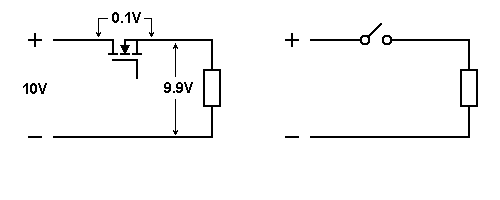danishdeshmuk
Advanced Member level 1

why do we want VDS close to 0 in MOSFET ?
thanks
thanks
Follow along with the video below to see how to install our site as a web app on your home screen.
Note: This feature may not be available in some browsers.







for an nmosfet as a switch :
i/p:between gate and source .
i/p voltage should be greater than Vthreshold.
o/p:betwn drain and source.
drain pulled up by a resistor(not recmndd) or by an active device.

